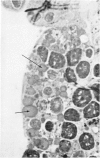Abstract
Nutritional balance studies were conducted to determine the effect of Eimeria acervulina infection on the retention of nutrients and the efficiency of utilization of protein and energy in the diet during the course of intestinal coccidiosis in chickens. Both light and electronmicroscopic studies were conducted to elucidate the pathogenesis of fat malabsorption in the infected chickens. The infection with E. acervulina during the acute phase of the disease (day 4 to day 8 postinfection) caused a reduction (P smaller than 0.01) in the retention of percent protein, percent ether extract and percent gross energy of the diet with a concomitant increase (P smaller than 0.01) in the concentration of ether extract and gross energy of the excreta. The metabolizable energy value of the diet was also depressed during this phase. During the recovery phase of the disease (day 9 to day 13 postinfection) infected chickens voided excreta containing a slightly greater concentration of ether extract when compared to the controls but differences in the retention of percent protein and percent gross energy were no longer observed. An increased retention of percent phosphorus also occured during the recovery phase. Studies involving the carcass composition revealed that the efficiency of utilization of protein and metabolizable energy of the diet for tissue deposition was reduced (P smaller than 0.05) during day 0 to day 8 postinfection but only the efficiency of metabolizable energy utilization was found to be depressed (P smaller than 0.05) when data for day 0 to day 14 postinfection were analyzed. Both light and electronmicroscopic studies of the duodenal villi of infected chickens during day 5 to day 6 postinfection revealed accumulation of large globules of fat in the villus epithelial cells parasitized by the gammonts of E. acervulina indicating a possible blackade of "fat exit" from these cells.
Full text
PDF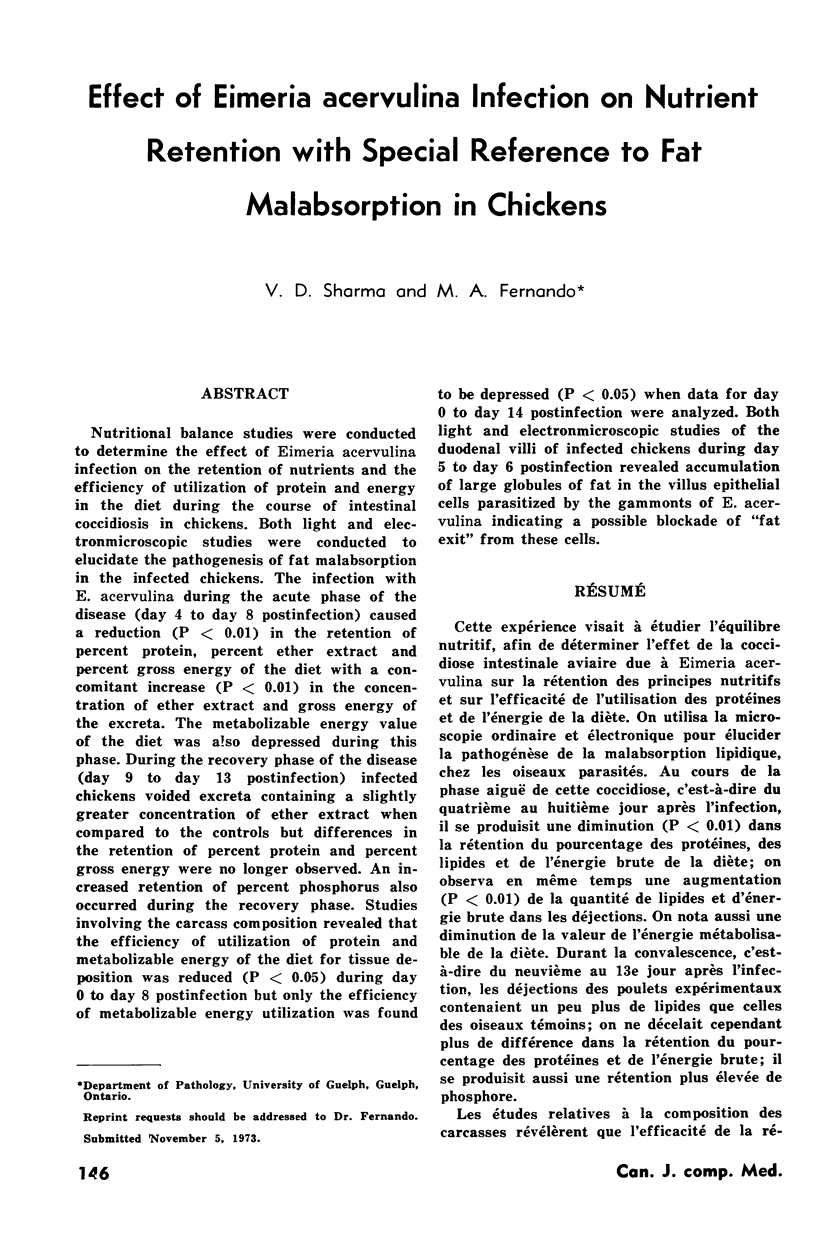
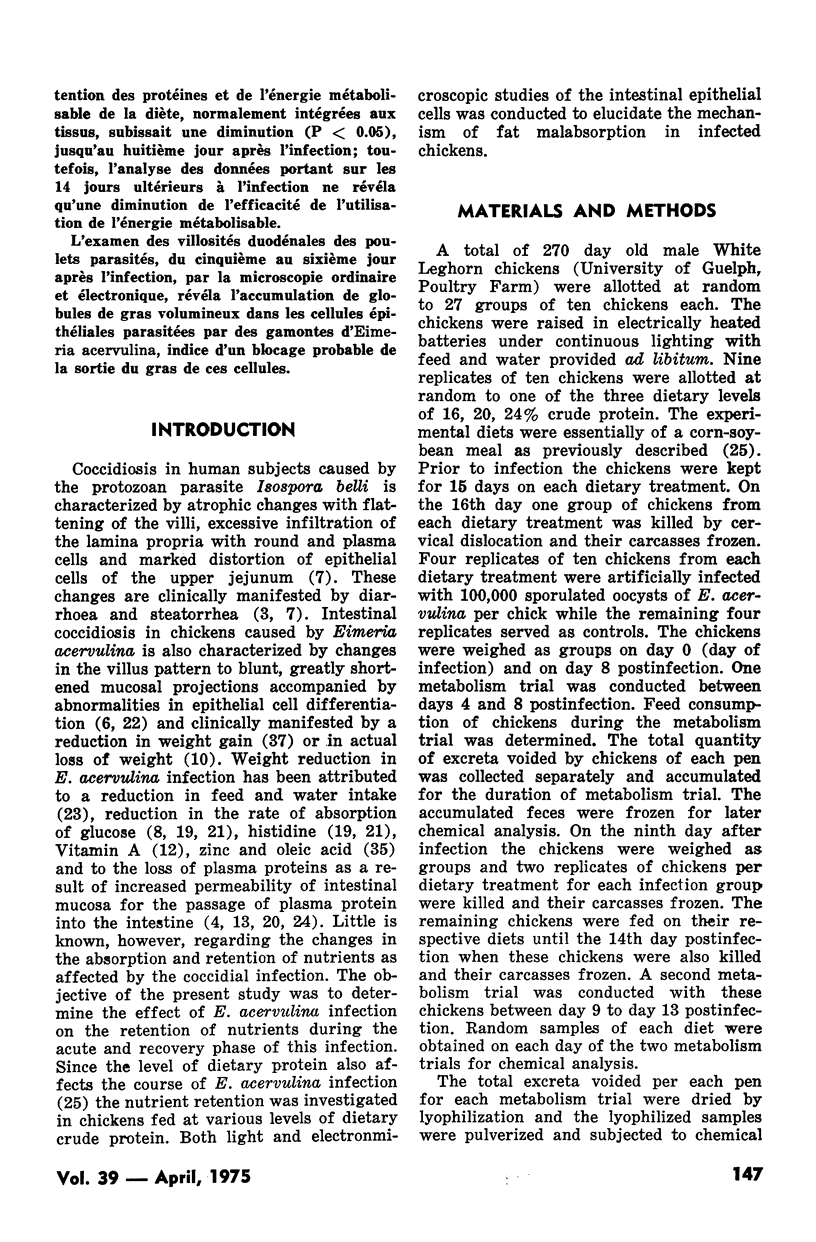
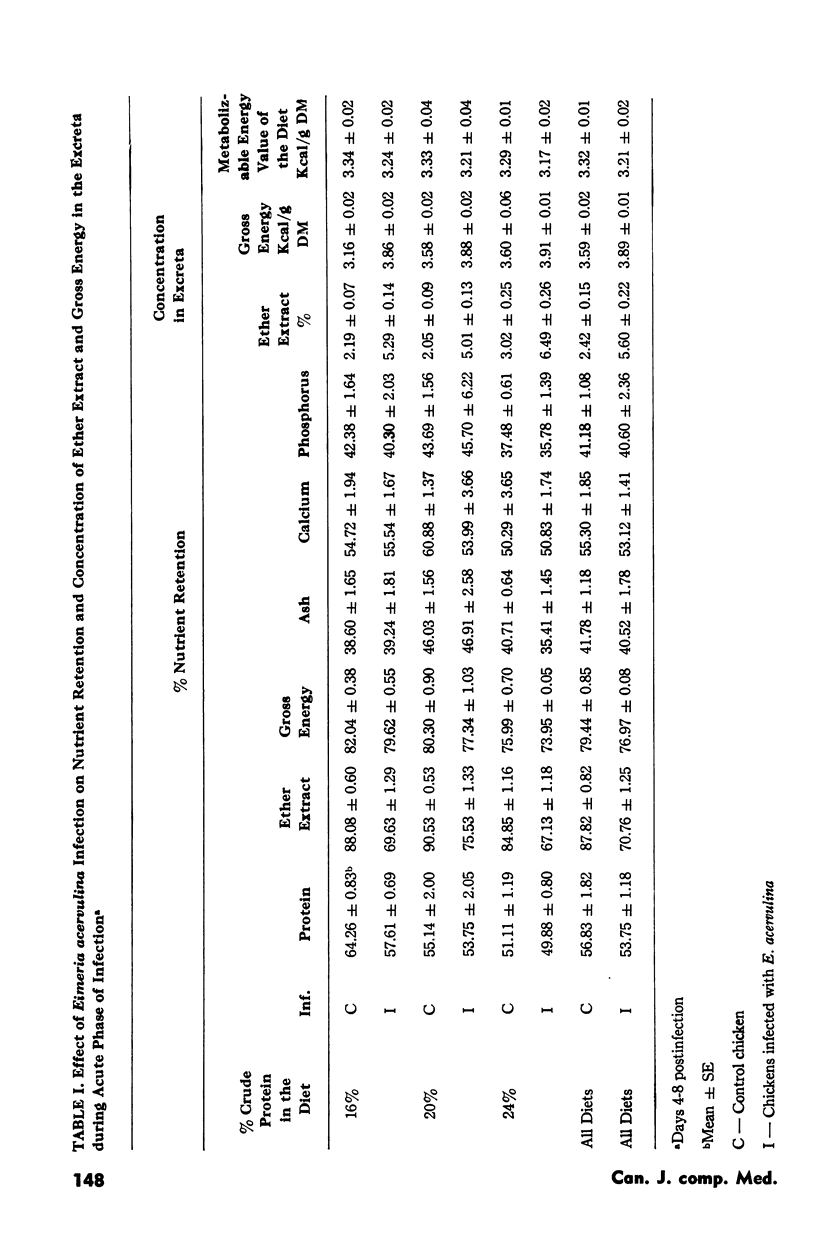
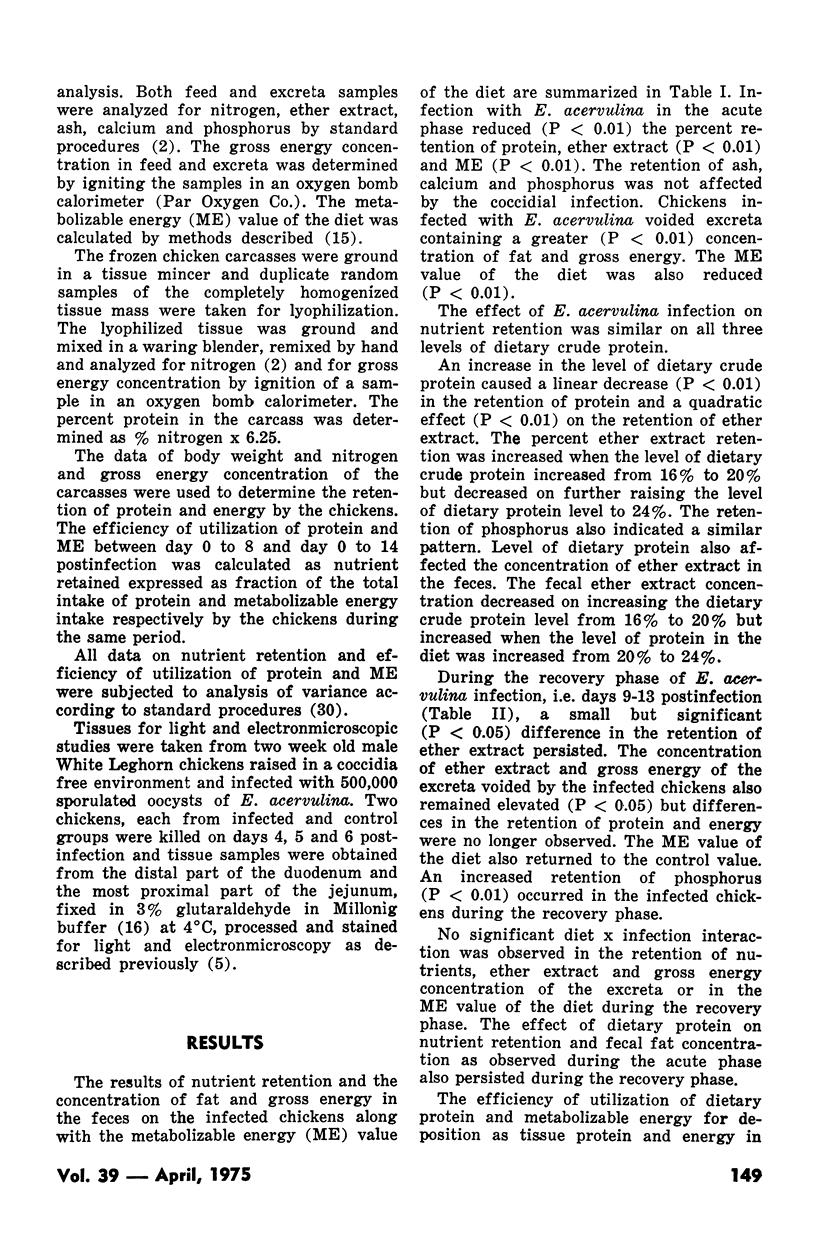
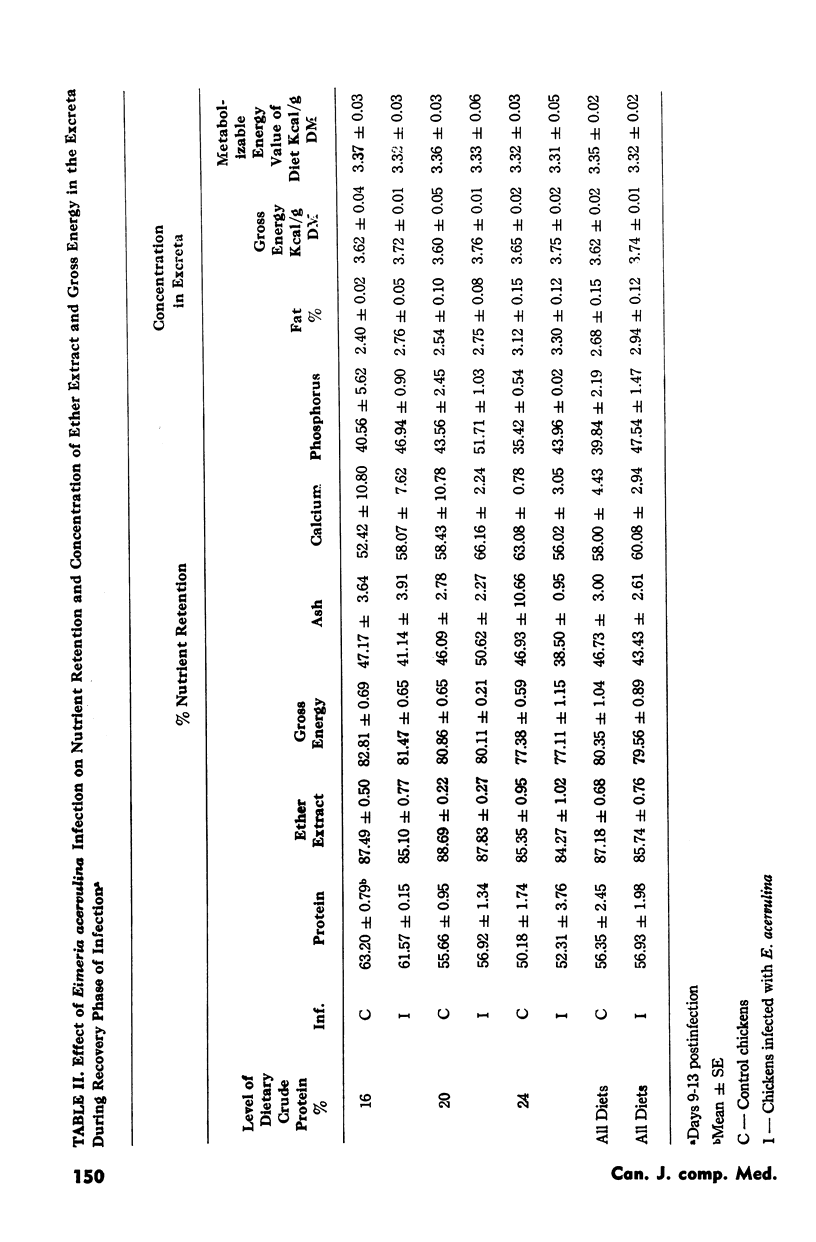
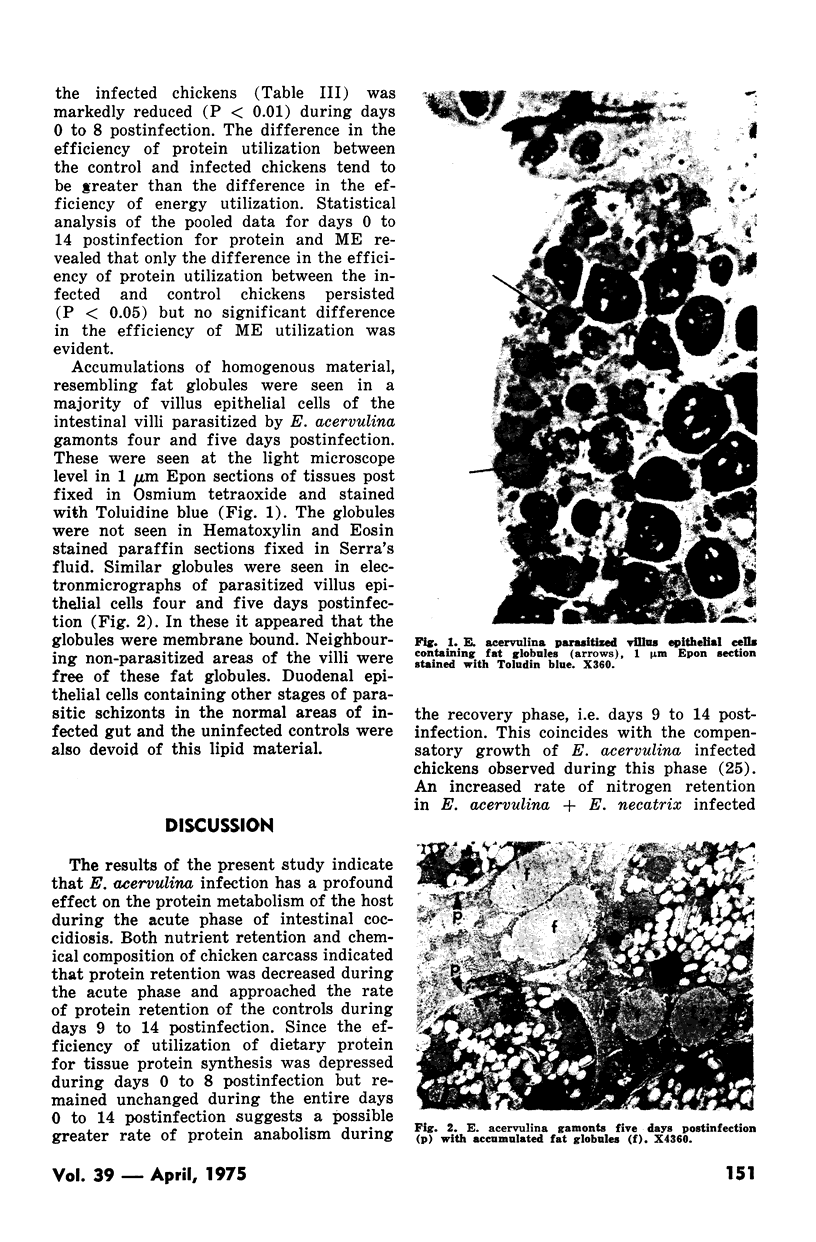
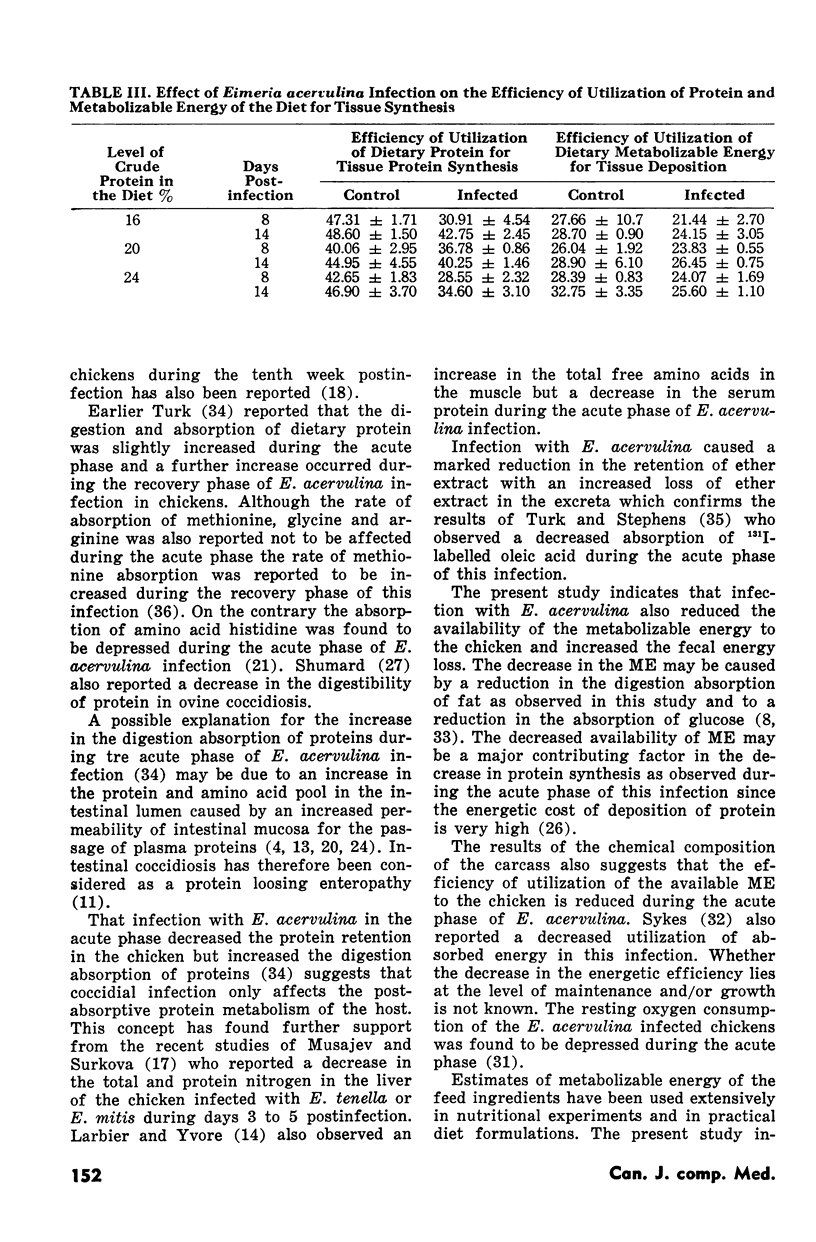
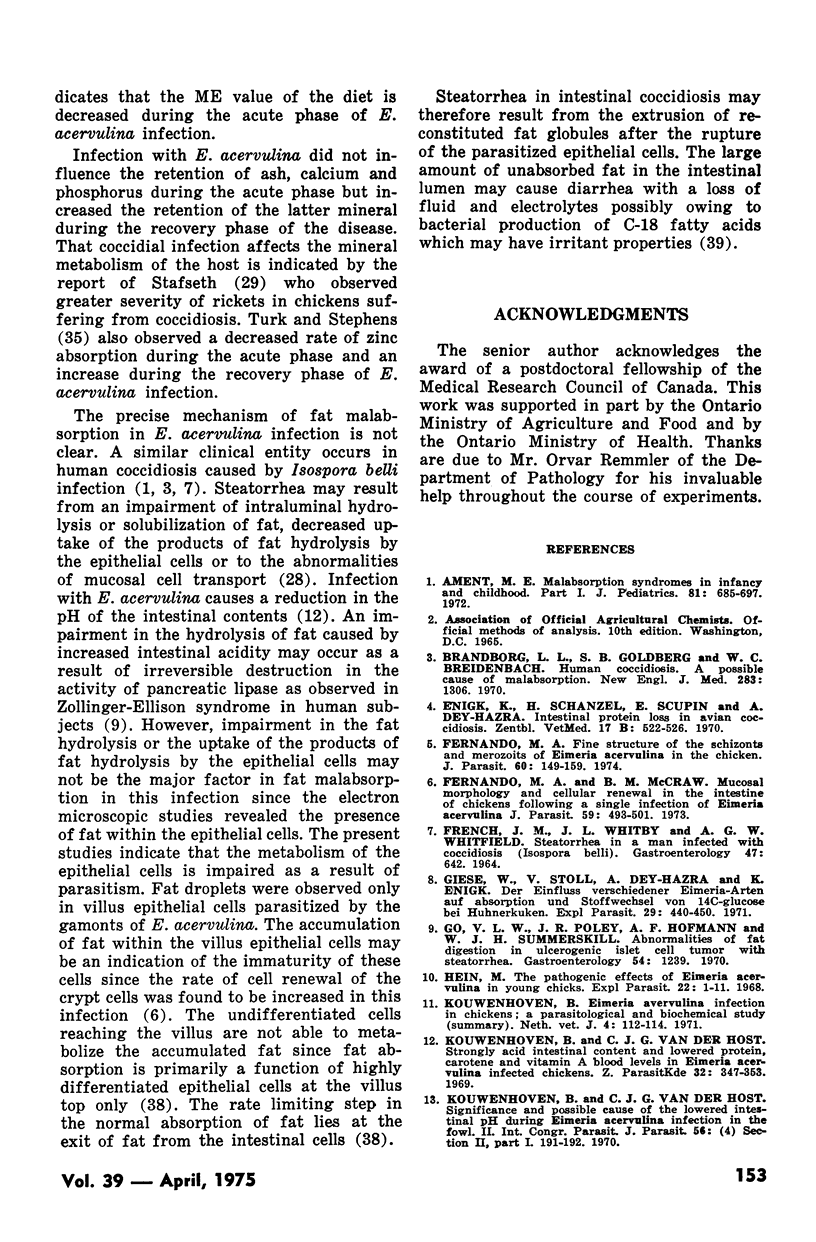
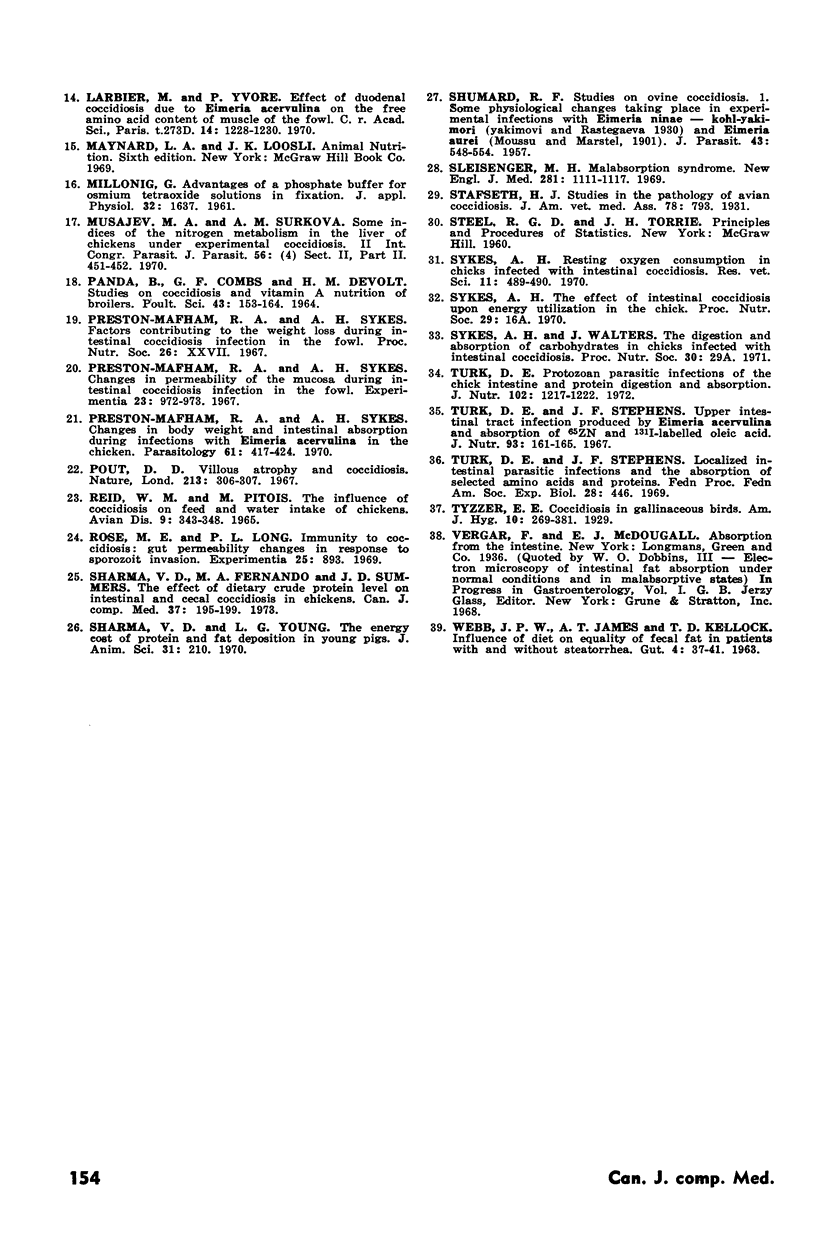
Images in this article
Selected References
These references are in PubMed. This may not be the complete list of references from this article.
- Ament M. E. Malabsorption syndromes in infancy and childhood. I. J Pediatr. 1972 Oct;81(4):685–697. doi: 10.1016/s0022-3476(72)80087-8. [DOI] [PubMed] [Google Scholar]
- Brandborg L. L., Goldberg S. B., Breidenbach W. C. Human coccidiosis--a possible cause of malabsorption. N Engl J Med. 1970 Dec 10;283(24):1306–1313. doi: 10.1056/NEJM197012102832403. [DOI] [PubMed] [Google Scholar]
- Enigk K., Schanzel H., Scupin E., Dey-Hazra A. Der enterale Plasmaproteinverlust bei der Coccidiose des Huhnes. Zentralbl Veterinarmed B. 1970 Apr;17(4):522–526. [PubMed] [Google Scholar]
- FRENCH J. M., WHITBY J. L., WHITFIELD A. G. STEATORRHEA IN A MAN INFECTED WITH COCCIDIOSIS (ISOSPORA BELLI). Gastroenterology. 1964 Dec;47:642–648. [PubMed] [Google Scholar]
- Fernando M. A. Fine structure of the schizonts and merozoites of Eimeria acervulina in the chicken. J Parasitol. 1974 Feb;60(1):149–159. [PubMed] [Google Scholar]
- Fernando M. A., McCraw B. M. Mucosal morphology and cellular renewal in the intestine of chickens following a single infection of Eimeria acervulina. J Parasitol. 1973 Jun;59(3):493–501. [PubMed] [Google Scholar]
- Giese W., Stoll U., Dey-Hazra A., Enigk K. Der Einfluss verschiedener Eimeria-Arten auf Absorption und Stoffwechsel von 14 C-Glucose bei Hühnerküken. Exp Parasitol. 1971 Jun;29(3):440–450. doi: 10.1016/0014-4894(71)90053-1. [DOI] [PubMed] [Google Scholar]
- Hein H. The pathogenic effects of Eimeria acervulina in young chicks. Exp Parasitol. 1968 Feb;22(1):1–11. doi: 10.1016/0014-4894(68)90072-6. [DOI] [PubMed] [Google Scholar]
- Kouwenhoven B., van der Horst C. J. Strongly acid intestinal content and lowered protein, carotene and vitamin A blood levels in Eimeria acervulina infected chickens. Z Parasitenkd. 1969;32(4):347–353. doi: 10.1007/BF00259647. [DOI] [PubMed] [Google Scholar]
- Pout D. D. Villous atrophy and coccidiosis. Nature. 1967 Jan 21;213(5073):306–307. doi: 10.1038/213306b0. [DOI] [PubMed] [Google Scholar]
- Preston-Mafham R. A., Sykes A. H. Changes in body weight and intestinal absorption during infections with Eimeria acervulina in the chicken. Parasitology. 1970 Dec;61(3):417–424. doi: 10.1017/s0031182000041263. [DOI] [PubMed] [Google Scholar]
- Preston-Mafham R. A., Sykes A. H. Changes in permeability of the mucosa during intestinal coccidiosis infections in the fowl. Experientia. 1967 Nov 15;23(11):972–973. doi: 10.1007/BF02136257. [DOI] [PubMed] [Google Scholar]
- REID W. M., PITOIS M. THE INFLUENCE OF COCCIDIOSIS ON FEED AND WATER INTAKE OF CHICKENS. Avian Dis. 1965 Aug;9(3):343–348. [PubMed] [Google Scholar]
- SHUMARD R. F. Studies on ovine coccidiosis. I. Some physiological changes taking place in experimental infections with Eimeria ninae-kohl-yakimovi (Yakimov and Rastegaeva, 1930) and Elmeria faurei (Moussu and Marotel, 1901). J Parasitol. 1957 Oct;43(5):548–554. [PubMed] [Google Scholar]
- Sharma V. D., Fernando M. A., Summers J. D. The effect of dietary crude protein level on intestinal and cecal coccidiosis in chicken. Can J Comp Med. 1973 Apr;37(2):195–199. [PMC free article] [PubMed] [Google Scholar]
- Sleisenger M. H. Malabsorption syndrome. N Engl J Med. 1969 Nov 13;281(20):1111–1117. doi: 10.1056/NEJM196911132812010. [DOI] [PubMed] [Google Scholar]
- Sykes A. H. Resting oxygen consumption in chicks infected with intestinal coccidiosis. Res Vet Sci. 1970 Sep;11(5):489–490. [PubMed] [Google Scholar]
- Turk D. E. Protozoan parasitic infections of the chick intestine and protein digestion and absorption. J Nutr. 1972 Sep;102(9):1217–1221. doi: 10.1093/jn/102.9.1217. [DOI] [PubMed] [Google Scholar]
- Turk D. E., Stephens J. F. Upper intestinal tract infection produced by E. acervulina and absorption of 65Zn and 131-I-labeled oleic acid. J Nutr. 1967 Oct;93(2):161–165. doi: 10.1093/jn/93.2.161. [DOI] [PubMed] [Google Scholar]
- WEBB J. P., JAMES A. T., KELLOCK T. D. The influence of diet on the quality of faecal fat in patients with and without steatorrhoea. Gut. 1963 Mar;4:37–41. doi: 10.1136/gut.4.1.37. [DOI] [PMC free article] [PubMed] [Google Scholar]



